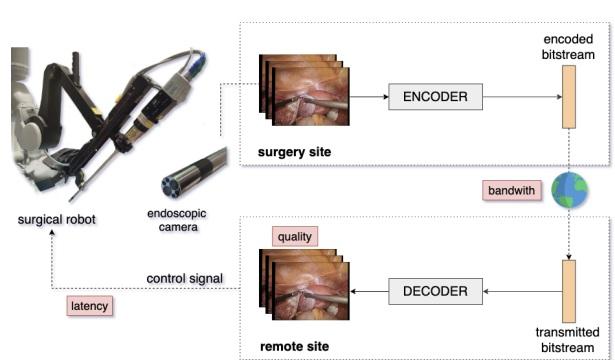Standard vs. Learning-based Codecs for Real Time Endoscopic Video Transmission

We compare traditional encoding/decoding methods for real time video streaming, like H264/AVC and H265/HEVC, and deep learning based methods, that are expected to deliver higher video quality at lower bandwidth in the next future. We concentrate our attention on the case of endoscopic videos, where streaming is part of a closed-loop system and robot-assisted minimally invasive surgery is performed on a patient in real time. Beyond low bandwidth and high video quality, such application also demands for low latency to guarantee the stability of the closed loop system and thus high safety standards. We analyze pros and cons of the deep learning approach in this domain, highlighting areas where deep neural networks overcome the traditional approach, and those that require further development. Our observations may be used as guidelines for the future research activity on video streaming in the surgical domain as well as in areas with similar requirements.
